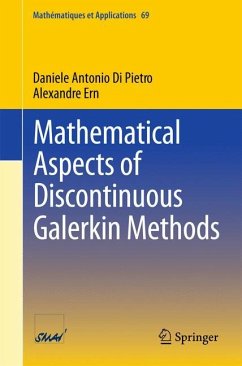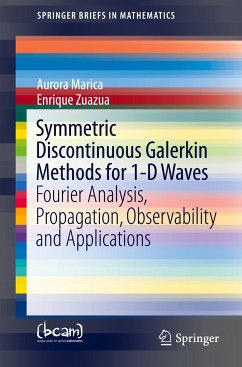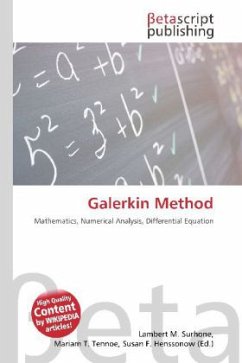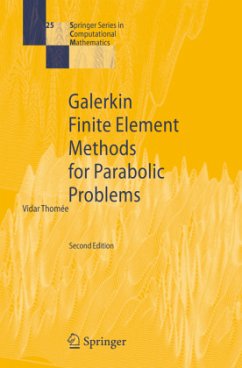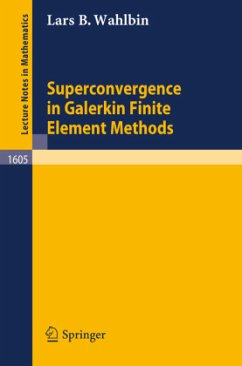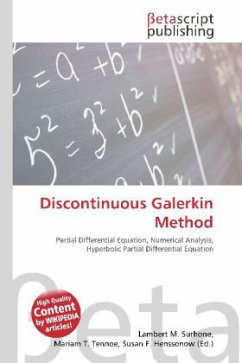
Discontinuous Galerkin Method
Versandkostenfrei!
Versandfertig in 6-10 Tagen
23,99 €
inkl. MwSt.

PAYBACK Punkte
12 °P sammeln!
Please note that the content of this book primarily consists of articles available from Wikipedia or other free sources online. Discontinuous Galerkin methods (DG methods) in mathematics form a class of numerical methods for solving partial differential equations. They combine features of the finite element and the finite volume framework and have been successfully applied to hyperbolic, elliptic and parabolic problems arising from a wide range of applications. DG methods have in particular received considerable interest for problems with a dominant first-order part, e.g. in electrodynamics, f...
Please note that the content of this book primarily consists of articles available from Wikipedia or other free sources online. Discontinuous Galerkin methods (DG methods) in mathematics form a class of numerical methods for solving partial differential equations. They combine features of the finite element and the finite volume framework and have been successfully applied to hyperbolic, elliptic and parabolic problems arising from a wide range of applications. DG methods have in particular received considerable interest for problems with a dominant first-order part, e.g. in electrodynamics, fluid mechanics and plasma physics. Discontinuous Galerkin methods were first proposed and analyzed in the early 1970s as a technique to numerically solve partial differential equations. In 1973 Reed and Hill introduced a DG method to solve the hyperbolic neutron transport equation.




